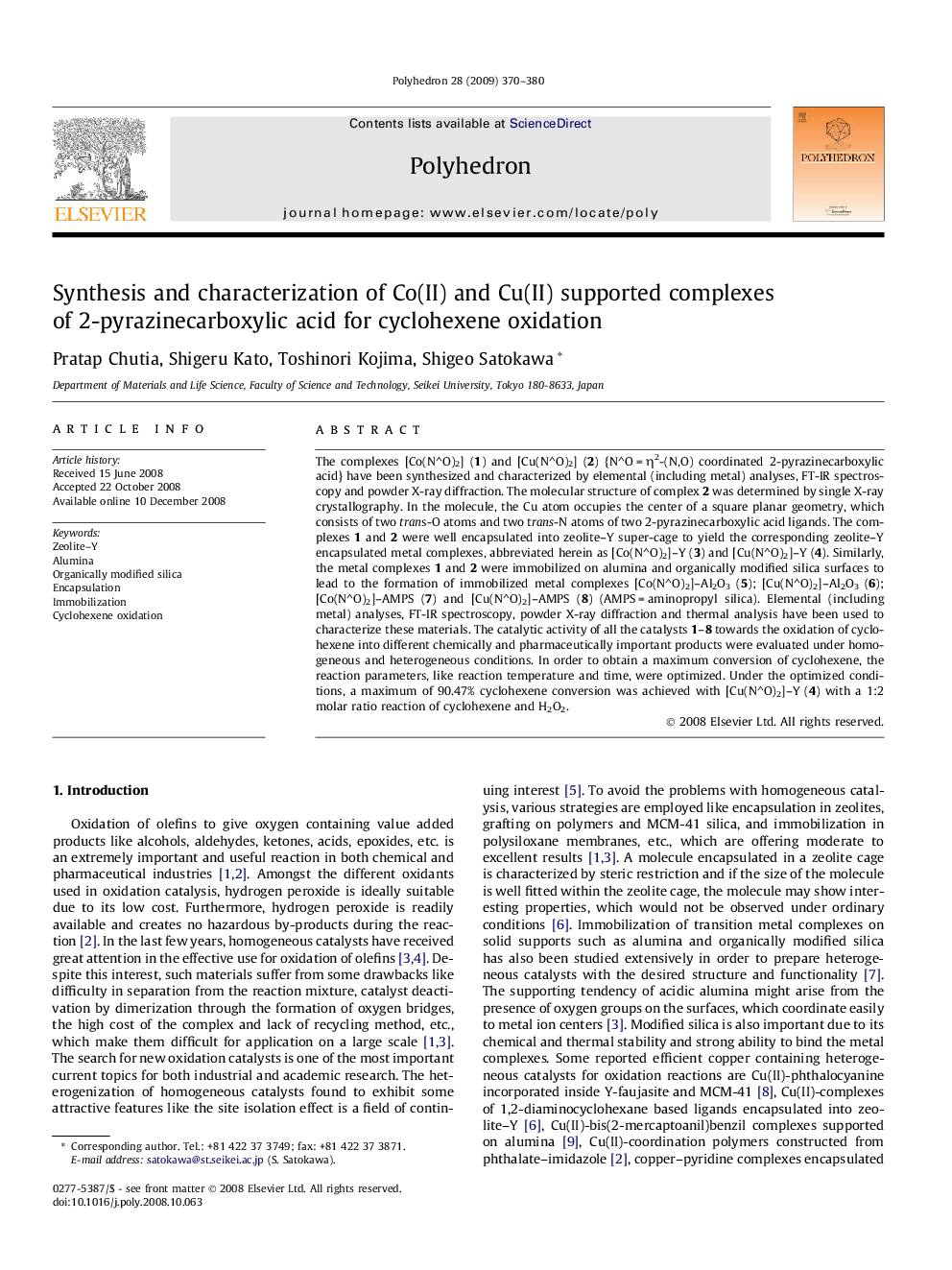| Article ID | Journal | Published Year | Pages | File Type |
|---|---|---|---|---|
| 1339050 | Polyhedron | 2009 | 11 Pages |
The complexes [Co(N^O)2] (1) and [Cu(N^O)2] (2) {N^O = η2-(N,O) coordinated 2-pyrazinecarboxylic acid} have been synthesized and characterized by elemental (including metal) analyses, FT-IR spectroscopy and powder X-ray diffraction. The molecular structure of complex 2 was determined by single X-ray crystallography. In the molecule, the Cu atom occupies the center of a square planar geometry, which consists of two trans-O atoms and two trans-N atoms of two 2-pyrazinecarboxylic acid ligands. The complexes 1 and 2 were well encapsulated into zeolite–Y super-cage to yield the corresponding zeolite–Y encapsulated metal complexes, abbreviated herein as [Co(N^O)2]–Y (3) and [Cu(N^O)2]–Y (4). Similarly, the metal complexes 1 and 2 were immobilized on alumina and organically modified silica surfaces to lead to the formation of immobilized metal complexes [Co(N^O)2]–Al2O3 (5); [Cu(N^O)2]–Al2O3 (6); [Co(N^O)2]–AMPS (7) and [Cu(N^O)2]–AMPS (8) (AMPS = aminopropyl silica). Elemental (including metal) analyses, FT-IR spectroscopy, powder X-ray diffraction and thermal analysis have been used to characterize these materials. The catalytic activity of all the catalysts 1–8 towards the oxidation of cyclohexene into different chemically and pharmaceutically important products were evaluated under homogeneous and heterogeneous conditions. In order to obtain a maximum conversion of cyclohexene, the reaction parameters, like reaction temperature and time, were optimized. Under the optimized conditions, a maximum of 90.47% cyclohexene conversion was achieved with [Cu(N^O)2]–Y (4) with a 1:2 molar ratio reaction of cyclohexene and H2O2.
Graphical abstractCo(II) and Cu(II) complexes with 2-pyrazinecarboxylic acid were synthesized and characterized. These complexes were immobilized on zeolite–Y, alumina and organically modified silica surfaces. The immobilized complexes were characterized using different experimental techniques. These complexes catalyze the oxidation of cyclohexene in the presence of H2O2 giving rise to 2-cyclohexen-1-one as the major product.Figure optionsDownload full-size imageDownload as PowerPoint slide
